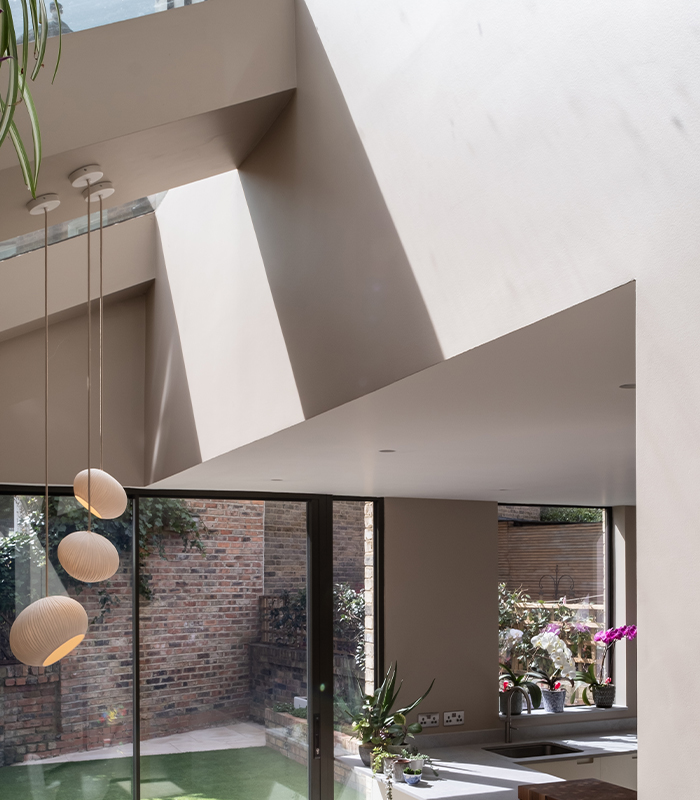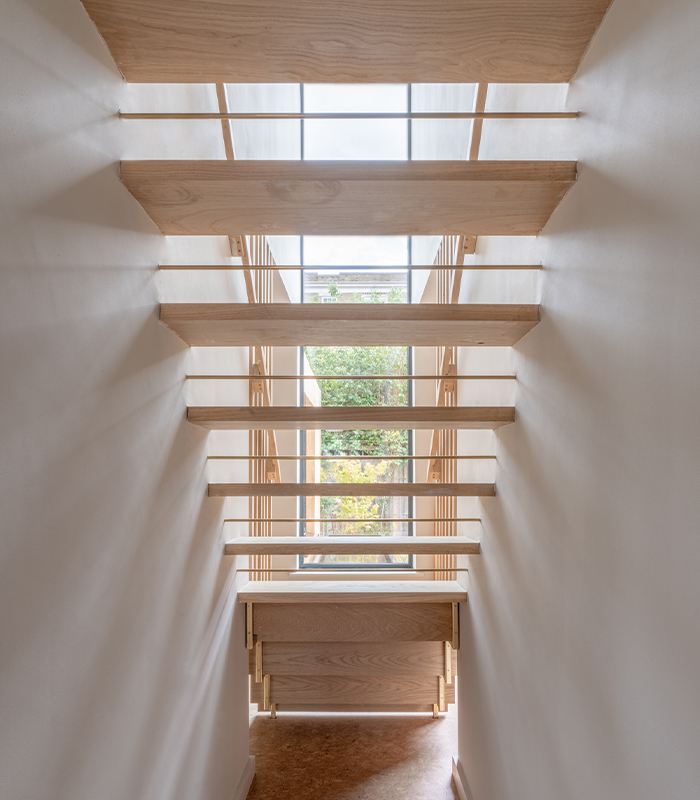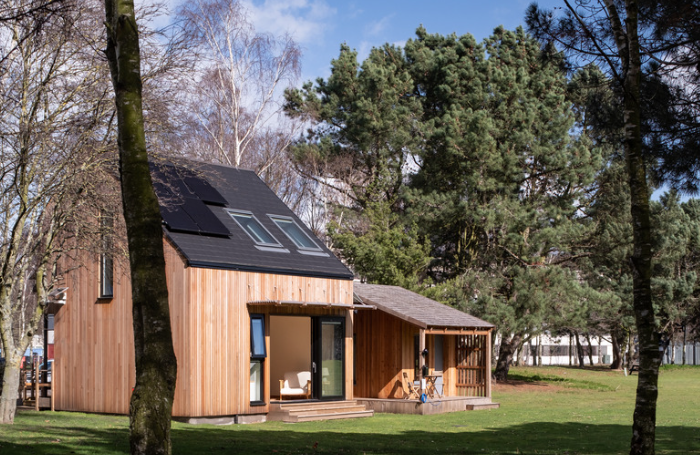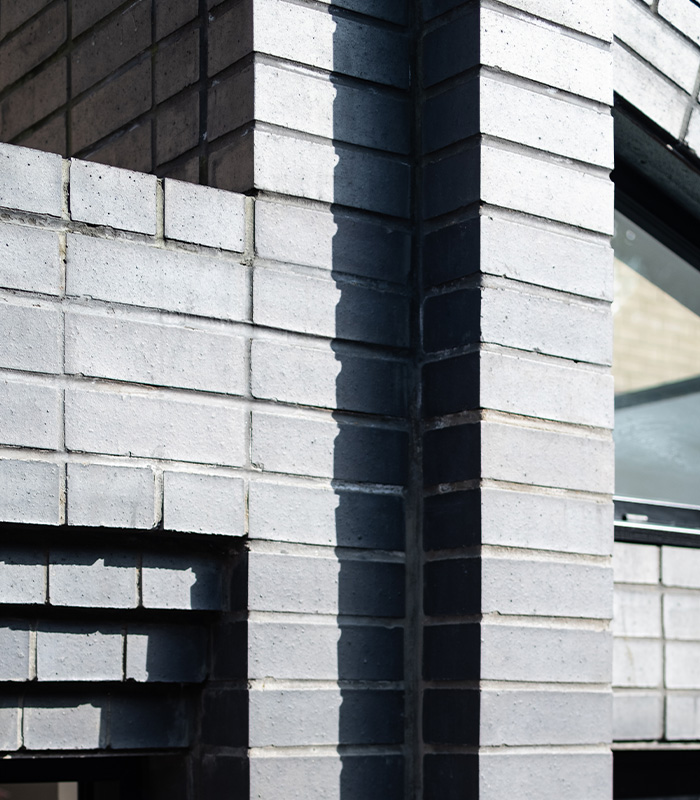This month, RIBA London spoke to Studio Manifest who are re-establishing the architect as Master Builder for the 21st century, based on three key principles: simplicity, active research, and a strong culture.
By simplifying their services and using technology to allow them to scale or streamline appropriately, their direct links to the latest research mean they employ new ways of thinking in relation to sustainability and affordability.
Studio Manifest are building a great place to work and grow as an architect in terms of being able to challenge the status quo. By placing emphasis on these areas, they believe they can help to bring about meaningful change in tackling both the climate and housing crises.
Tell us a bit about how Studio Manifest came about?
Studio Manifest was launched to bridge the gap between theory and practice, and to provide a holistic and scalable architectural service to domestic and commercial clients that want to place sustainable and cost-effective design at the heart of their build.
Founder Ben Powell launched the business after working in a range of different practices, from small to large, with each specialising in different disciplines from historic building conservation through to commercial office spaces. He became convinced that for architects to play their part in overcoming the climate and housing crises, three key issues needed to be tackled:
- Fundamentally, his overriding experience is of a massive resistance to change within the construction industry. Driven by the financial bottom line, there is an embedded fear of the unknown which inhibits creativity and innovation. This makes the case difficult for the meaningful integration of more sustainable methods.
- At the same time, while architects possess the knowledge and skills to play an integral part in tackling these crises, their role has been increasingly marginalised. Outside of the well-informed, the perception of an architect’s job is often reduced to something akin to conceptual designer or glorified draughtsperson. There is often a lack of awareness of the years of rigorous training that architects go through, specifically with regard to climate and low energy design solutions.
- Finally, Ben saw a lot of exciting creative graduates, particularly at larger practices, go on to lose interest in the potential of architecture to solve big societal problems. Worn down by long hours and swallowed up by the machine, they became less willing to challenge and lost their creative edge. Conversely, practices regularly complain that graduates are not well prepared for life in industry, and don’t have enough understanding of what it really takes to build something.

Studio Manifest was launched to tackle these issues, by placing particular emphasis on creating stronger links between professional practice and academia. Ben is a founding member of the new architecture department at the University of Suffolk and his work there forms a symbiosis with the studio, with research informing practice and vice versa.
This is particularly true in relation to the subjects of sustainability and affordability. By bridging this gap and working more harmoniously, Studio Manifest is starting to see the benefits of this approach in bringing about meaningful change.
What’s the most important issue for architects to focus on right now?
The biggest challenge of our lifetime is undoubtedly the climate crisis. But in the UK we also have an acute housing crisis, and these issues need to be addressed simultaneously.
For architects to play the role that most in the profession feel they can and should, we believe the industry must better make the case for why our skills are so relevant in tackling today’s challenges. That’s why we’re focused on bringing back the concept of the architect as a ‘Master Builder’.

What do you mean by the ‘Master Builder’ concept? And why do you think it’s relevant today?
The title ‘Master Builder’ preceded that of the architect and was historically used to describe someone that has the holistic overview of a construction project in order to bring together the "art and science of building".
While we’re taught during our studies that this is an architect’s role, the reality is that over time our role in the industry has become fragmented, making it harder to maintain this critical and holistic link between art and science. In order to overcome the resistance to change in the construction industry, and for us to successfully integrate sustainable materials and methods into construction in an affordable way, we must take back this holistic approach.
At Studio Manifest our aim is to re-establish the architect as a Master Builder for the 21st century, based on the following three tenets:
- Simplicity: moving away from complex and alienating language that surrounds the profession, and using technology to easily streamline and scale our services so that we’re relevant to budgets of all sizes.
- Active research: combining theory and practice in order to embed new thinking and methods in what we do day-to-day, particularly in relation to sustainability and affordability.
- Culture: harnessing the collective creativity of our team by putting people at the heart of the practice. By creating an inclusive and empowering environment where people enjoy what they do, our aim is to foster architects that are stimulated, driven, and continue to challenge the status quo.

How are these ideas ‘manifesting’ themselves in your practice?
Technology is playing a really important role in helping us to realise our goals. Embracing BIM has not only allowed us to find a range of efficiencies, but it also provides an opportunity for us to offer a more holistic service, such as through the production of schedules and quantities that give early stage cost insights.
We’re also thinking outside the box in terms of how technology can be used to simplify communications, empower our clients, and streamline the overall design and development process. These efficiencies have already allowed us to expand our services to a wider range of people. Going against the accepted norm, we’re now offering a lower cost fixed-fee package for smaller domestic projects - alongside more traditional residential and commercial projects.
By combining theory and practice, we’ve developed and incorporated a new approach to low energy design through timber frame building. This has now been standardised across our projects to provide a cost effective solution that has a massive reduction in embodied carbon versus typical brick and block construction.
But perhaps the most exciting part of all of this is how it is driven by our team who are at the heart of the development and implementation of all our new ideas. We’re a small company and, although we’re growing, we plan to maintain our start-up mentality. We believe small businesses - both architects and contractors - will play a much more prominent role in sustainability within the sector long term. Our size keeps us agile, we’re able to respond to briefs quickly, and we can connect with both our clients and our wider community on a personal level.
As well as implementing research and development time each week, we allow our team to work flexibly to suit their individual needs, and we actively encourage personal and professional development across the board. We include the whole team in monthly business development and marketing sessions, to ensure everyone is fully up to speed and engaged in helping to shape the company. We also have a bi-annual team offsite which we’ve found to be a highly productive, creative time to get together to look at the bigger picture.

What’s the most exciting project you’ve got coming up and why?
We’re currently working on a wide range of projects; it’s an exciting time at the studio. They all share our core sustainable designs that utilise our timber construction methodology, particularly our low embodied carbon construction process.
A particularly interesting live project is a zero carbon house in Greenwich. We’re working with a fantastic supplier that produces hemp-fibre panels for offsite construction, which can be simply taken apart and reused.
To help with cost management, we’re working collaboratively with the clients; they are managing the project while we act as consultants through the process. The finished project will therefore be a zero carbon, sustainable self-build exemplar, demonstrating that sustainable design doesn’t have to be complex, and can be accessible to everyone. Our methods also prove that low cost construction can be used to create exceptional and unique spaces that do not have a negative impact on the environment, whilst enhancing the character of the local area.
What benefits have you experienced from becoming a RIBA Chartered Practice?
When we first started our practice, we were lucky enough to be part of the RIBA Incubator, a couple of doors up from the iconic RIBA HQ, in Portland Place. This was not only great in giving us a platform to build the business from, but it also helped us to build our network and introduced us to some inspiring people within our field. When the pandemic hit, we were able to carry on our practice from home, without having to think about wasted overheads or office expenses.
The access to information through both the RIBA Journal and the range of CPD and other supporting programmes available is an incredible resource. But most crucially to us, the Find an Architect service has been invaluable in building our client base. Now that our practice has grown, we are able to invest more in our website and general marketing, but the Find an Architect service has provided us with a platform to compete on a level playing field with other practices. It puts you in front of clients who may not otherwise find you through traditional searches and lets your services and design quality speak for themselves.
To find out more about Studio Manifest, visit the Studio Manifest website or connect with them on Instagram.










